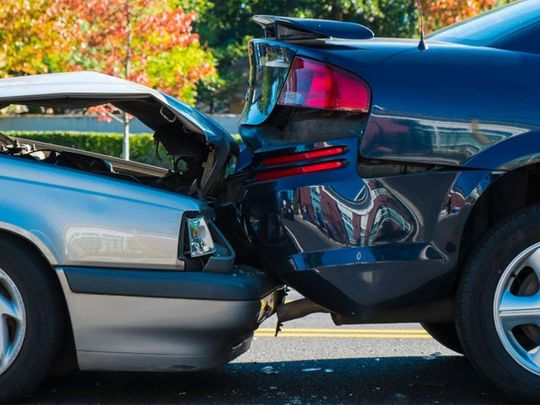
Abu Dhabi: Seven men of Saudi and Pakistani nationalities, in their 20s and 30s, were arrested for allegedly staging road accidents, stealing cars, dismantling them and selling their parts, police said.
The theives’ line of business was to stage road accidents, by rear-ending innocent drivers’ vehicles, stealing cars, taking advantage of the stressful incidents, disassembling the vehicles in a chop shop south Riyadh, and selling their parts, Major Khaled Al Kreidis, spokesman for the Riyadh police, said.
To avoid being caught, criminals disassembled cars within hours of stealing them. However, the police have recovered all the stolen parts and the thieves were remanded in custody before referring them to the Public Prosecution for further interrogation and trial, police said.
How to know if you are a victim of a staged accident
Few things can ruin your day faster than a car accident. What’s even worse is when you find out you are the victim of a staged accident. Unfortunately, this type of fraud is common during tough economic times, like we’re currently facing.
Types of staged car accidents
T-Bone: A dishonest driver drives their car into the side of your car as you pass through an intersection, “t-boning” your car. They may have phony witnesses standing by to say that you were at fault for running a red light or a stop sign.
Swoop and Squat: This common scam happens when a dishonest driver gets in front of you and slams on his brakes, causing you to rear-end his vehicle. This may happen during heavy traffic. He or she may work with other drivers to box you in so that you can’t swerve out of the way. They often have several passengers in the car, who will claim to be injured.
Drive Down or Wave: A dishonest driver waves you to merge ahead of them into traffic. When you pull into the lane, they speed up and hit you. After the accident, they deny that they signaled to you.
Signs your accident may have been staged
• After the accident, there may be several “witnesses” who support the other driver’s version of events.
• In staged auto accidents, the other car often has several passengers. Everyone seems relaxed and OK until the police show up. At that point, they will complain of soft-tissue injuries.
• The driver of the other vehicle may try to talk you out of calling the police, or may try to get you to settle for cash on the spot and not call your insurance.
• Someone may approach you after the accident and try to talk you into visiting a certain doctor or auto body shop.
What you can do
• Always be aware of your surroundings and drive defensively. Don’t get distracted with your cell phone or passengers, and never tailgate other cars.
• After an accident, take lots of pictures of the scene from all angles. Make sure you get photos of the other driver, his or her license plate, and the damage to both vehicles. Your cell phone camera will work well.
• Keep a pen and paper in your car at all times and take notes or use your cell phone voice recorder immediately after the accident, while everything is still fresh in your mind. Write down a general description of the other driver, any details you remember, as well as any impressions you may have.
• Call the police and get a report after an auto accident, even if it’s minor. Make sure you get a copy of the police report, and follow up with the officer.
• Report all accidents to your insurance company, and never settle for cash on the spot.








